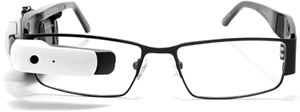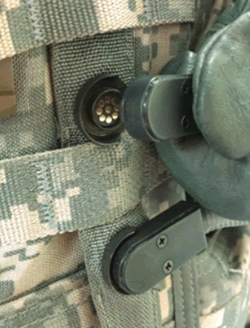Wearables on the Factory Floor
Industry 4.0 is the point where automation, the Internet of Things, wearables, and customization converge.
“Industry 4.0” is still a bit of a buzzword, but it gets closer to realization every day. Industry 4.0 refers to the fourth industrial revolution. In earlier articles, we discussed the first (industrialization), second (mass production), and third (IT integration) revolutions. The fourth, Industry 4.0, refers to mass customization, in which mass production will allow each manufactured product to be ordered by special customer request.
Industry 4.0 embodies a combination of technologies that are hitting the factory floor and changing the way we design and manufacture stuff. When combined, these capabilities could bring us to the next level in manufacturing:
- Wireless communication on the factory floor in addition to existing networks (e.g. Ethernet and open standard)
- Machines that talk to each other
- Humans working alongside robots
- Machines that can reprogram themselves to do other jobs (many of us wish to have that ability, including your author!)
- Availability of computing power and cloud capabilities to handle Big Data
- Miniaturization of electronics to allow, for example, tiny RFID tags or flexible circuitries that fit snugly in or on our products
- Additive manufacturing (3D printing) to create things that were difficult to make before, at a faster rate
- New materials that make products better and more cost-efficient

WearKinetic Wristable helps worker correctly lift boxes.
But there is more; not only are machines and materials changing, but we are changing, too. I would not go so far as to imagine a genetically modified human being, modeled to do specific jobs or execute certain tasks; that’s for future generations to think about. For now, the next step will be the introduction of wearables on the factory floor.
Wearables technology is not new; the devices have been in use by the military for some time. However, now they are everywhere in our private lives as well – in the fitness room, on the street, and in front of the TV. Fitbits, Apple’s iWatch, and other gadgets are selling well. More recently, wearable devices are finding their way to the factory floor – not to count the number of steps taken that day, but to aid workers with the job at hand.
Controlling a machine and fine-tuning it can be done much better with an immediate live feed of data. Troubleshooting is easier with readouts tracking the performance of various components in the machine. These wearables are quite different from consumer products and have more in common with the ones used by the military – they must not distract us, should not hinder our movements and line of sight, and must aid us with our work by providing timely, correct, and useful information (the amount of calories I burned to fix the machine is probably not one of them).
Factory wearables must meet specific criteria and should also be “factory-floor-proof,” meaning they are robust enough for repeated use in a harsh environment.
These requirements will bring another discipline to the forefront: Ergonomics. While the first, second, and third industrial revolutions were mostly concerned with output, data, and product quality, we now need to integrate ourselves into the factory environment – what we wear when we go to work in the factory will need to fit like a glove.

Vuzix M100 Smart Glasses
Sensors are key to the success of Industry 4.0, but so is connectivity. Without being able to sense or detect, and without being able to transmit and connect devices to share the data, there is no Industry 4.0. In anticipation, connector makers are already moving into the sensor market. TE Connectivity and Amphenol both acquired sensor companies over the past years.
The bottom line, however, is that in order to be successful, wearables need to become an integral part of a manufacturer’s IoT strategy and production process to deliver value, which will be quantified in productivity increases, cost reductions, or quality improvements. This includes employee safety and health issues, which when optimized will lower costs for the employer. Wearable technology should – and we expect it will – move away from gadgetry to real added-value devices that will boost competitiveness of the manufacturer using them.
 When you think about wearable technology, smart watches, wristbands, or smart glasses are the ones that spring to mind first, but there are many other possible applications. For example, the German Fraunhöfer Research Institution for Modular Solid State Technologies (EMFT) developed a specialist glove that turns blue in the presence of toxic substances, which increases employee safety for those who work with harmful chemicals. Smart gloves may also be programmed to guide a technician when making repairs to a machine, as it knows the machine, the position/location of the worker and, based on data sent to it after some troubleshooting tests, what is wrong. Replacement parts can be 3D-printed on location and machine downtime kept to a minimum.
When you think about wearable technology, smart watches, wristbands, or smart glasses are the ones that spring to mind first, but there are many other possible applications. For example, the German Fraunhöfer Research Institution for Modular Solid State Technologies (EMFT) developed a specialist glove that turns blue in the presence of toxic substances, which increases employee safety for those who work with harmful chemicals. Smart gloves may also be programmed to guide a technician when making repairs to a machine, as it knows the machine, the position/location of the worker and, based on data sent to it after some troubleshooting tests, what is wrong. Replacement parts can be 3D-printed on location and machine downtime kept to a minimum.
DAQRI Smart Helmet
To get a better idea of the type of connectivity involved in wearables for the factory floor, it makes sense to look at military applications. Physical Optics Corporation (POC) has developed various products for soldiers such as the Wearnet Kit and Wearable Personal Area Network vests.

 The POC equipment utilizes USB interfaces, subminiature-D connectors, antennas, flat cable assemblies, and specially designed SNAPNET connectors to easily connect a variety of devices.
The POC equipment utilizes USB interfaces, subminiature-D connectors, antennas, flat cable assemblies, and specially designed SNAPNET connectors to easily connect a variety of devices.
Clearly a range of micro, PCB, and FPC connectors will be used inside the various devices, goggles, and other wearables, too.
Technological challenges remain, of course, but wearable technology is already present in various industries and is expected to become mainstream on the factory floor once the right technical format and interoperability is achieved and the added value, in terms of productivity and cost savings, can be proven. The arrival of Industry 4.0 and the Internet of Things will be catalysts that bring this market to the forefront.
- The Industrial Market for Connectors in a Changing World - April 20, 2021
- How Key Trends in the Transportation Market Will Impact Electronics Growth - March 17, 2020
- Automation Means a Bright Forecast for Industrial Connectors - February 19, 2019






